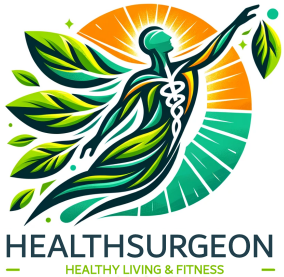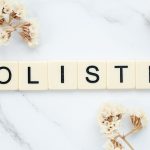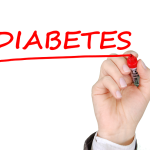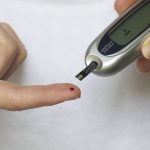A blood blister is a type of blister that forms when It looks like a raised, dark red or purplish bump and may feel tender or painful, especially if located on areas subject to friction like your feet, hands, or inside your mouth.
While blood blisters are generally harmless, understanding how to manage them properly can prevent infection and support faster healing.
What Causes Blood Blisters?
Blood blisters commonly occur due to pinching or trauma that does not break the skin but damages the blood vessels underneath. Common causes include:
- Friction and Pressure: Wearing tight shoes, using hand tools, or repetitive rubbing during workouts.
- Pinching Injuries: Getting your skin caught in a door or pinched between objects.
- Burns: Contact with hot surfaces or severe sunburn.
- Sports Activities: High-intensity sports like tennis, rowing, or hiking where friction and pressure are repetitive.
- Allergic Reactions: In rare cases, allergic reactions can cause blood blisters, particularly in the mouth.
- Medical Conditions: Certain conditions like thrombocytopenia or blood clotting disorders can make you prone to blood blisters even with minor trauma.
Understanding the underlying cause can help you prevent future blisters and address potential health concerns if they occur frequently.
What Are the Symptoms of a Blood Blister?
A blood blister typically presents as:
- A raised, fluid-filled bump with a dark red, purplish, or black appearance.
- Tenderness or mild pain.
- Intact skin covering the blister, which protects the fluid and underlying tissue.
How to Treat a Blood Blister
1️⃣ Leave It Alone (If Possible)
The best initial treatment is to leave the blister intact, as the skin covering it protects the underlying tissue from infection and supports healing. Most blood blisters will heal on their own within 1-2 weeks.
2️⃣ Protect the Area
- Cover the blister with a clean, padded bandage or moleskin if located in a high-friction area like your foot.
- Avoid activities that may aggravate the blister.
3️⃣ Use Ice and Elevation
- Apply a cold compress for 10-15 minutes after the injury to reduce swelling.
- Elevate the affected area to decrease blood flow and swelling.
4️⃣ Pain Management
- Over-the-counter pain relievers like ibuprofen can help reduce pain and inflammation if necessary.
Should You Pop a Blood Blister?
Generally, you should not pop a blood blister. Popping increases the risk of:
- Infection.
- Slower healing.
- Additional pain.
However, if the blister is very large, painful, or at risk of bursting on its own, consult a healthcare provider who may drain it using sterile techniques safely.
Signs of Infection to Watch For
Seek medical attention if you notice:
- Increasing redness, warmth, or swelling around the blister.
- Pus or cloudy fluid drainage.
- Severe pain or throbbing.
- Fever.
Infections require prompt treatment to prevent complications.
How to Prevent Blood Blisters
Prevention is key, especially for active individuals and those prone to repetitive friction injuries. Here’s how you can reduce your risk:
1️⃣ Wear Proper Footwear
- Choose shoes that fit well and provide adequate cushioning.
- Break in new shoes gradually to prevent pressure spots.
2️⃣ Use Protective Gear
- Wear gloves when using tools or during activities that may cause friction on your hands.
- Use padded socks during hikes or long walks.
3️⃣ Moisturize Your Skin
Dry skin increases friction, making you prone to blisters. Regularly moisturizing your hands and feet can help reduce your risk.
4️⃣ Tape or Moleskin on High-Risk Areas
If you’re prone to blisters in certain areas during workouts or sports, apply tape or moleskin as a protective barrier.
5️⃣ Address Medical Conditions
If you frequently develop blood blisters without clear trauma, consult your healthcare provider to rule out underlying clotting disorders or medical conditions.
When to See a Doctor
While most blood blisters heal without intervention, seek medical care if:
- The blister is unusually large or painful.
- It recurs frequently without clear cause.
- You suspect it is infected.
- You have an underlying medical condition like diabetes or a blood clotting disorder, making infections or healing complications more likely.
Natural Support for Skin Healing
As a health enthusiast, you may wish to support your body’s natural healing processes while your blister heals:
- Hydration: Stay well-hydrated to support skin repair.
- Vitamin C and Zinc: These nutrients support wound healing. Include citrus fruits, leafy greens, seeds, and nuts in your diet.
- Aloe Vera: If the blister accidentally pops, applying aloe vera may soothe the skin and support healing.
- Turmeric: Its anti-inflammatory properties may assist in reducing swelling when included in your diet.
Final Thoughts: Blood Blisters and Your Health
Blood blisters, while common and often minor, can be uncomfortable and inconvenient. By understanding what causes them, how to treat them safely, and prevention strategies, you can protect your skin and maintain your active lifestyle without unnecessary setbacks.
Remember:
✅ Avoid popping the blister to prevent infection.
✅ Protect the area and reduce friction.
✅ Seek medical care if infection or complications occur.
✅ Support healing with hydration, nutrition, and rest.
With these strategies, you can handle blood blisters confidently while staying aligned with your natural health goals.
READ MORE: Wheatgrass Promotes Skin Health
Sources:
https://www.nhs.uk/conditions/blisters/
https://my.clevelandclinic.org/health/diseases/14430-thrombocytopenia
https://dermatologyseattle.com/blood-blister-vs-melanoma/









